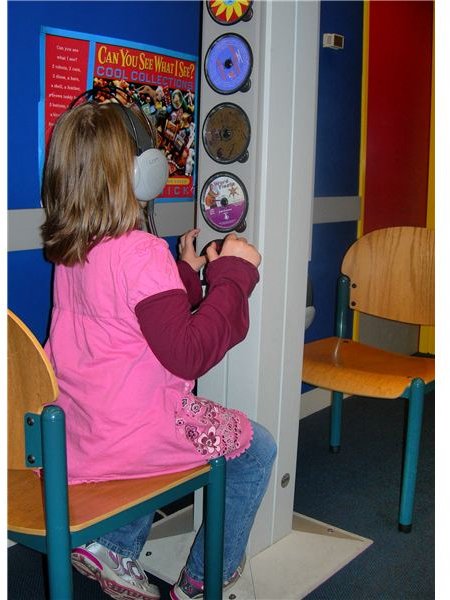Sound Activities & Lesson Plan for Preschool: Musical Instrument Craft & Group Activities
Learning About Sound
The concept of sound can be a difficult one for preschooler’s to grasp. While you can incorporate an activity on sound into a five senses theme, there are enough activities and concepts for children to learn that sound may warrant its own lesson plan. Be sure to give thought to all the things in a child’s daily experiences that can be described with sound. Below we have a number of teaching ideas and crafts to use to help children learn about sound and noises.
You can create several crafts to coincide with a lesson on sound. Here are two ideas:
Rain Sticks
Materials Needed:
- Paper towel tubes
- Aluminum foil
- Rubber bands
- Straight pins
- Masking tape
- Uncooked rice
- Markers
Steps:
- Place a folded square of aluminum foil over one end of the paper towel tube and wrap it with an elastic band to secure the end.
- Insert straight pins into the length of the tube. Be sure the pins you use are short enough so that they will not come poking through the other side of the tube.
- Pour a small amount of rice into the tube.
- Cover the open end of the tube with aluminum foil and secure it with an elastic band, as you did the first end.
- Wrap the entire tube in masking tape. Doing so will secure the pins in place and provide a good surface for children to draw on and decorate.
- Allow children to use markers to decorate their rain sticks.
Bongo Drum
Materials Needed
- Oatmeal containers
- Coffee cans
- Wax paper
- Elastic bands
Steps
- Use sandpaper to be sure there are no sharp edges on the coffee can.
- Cover the opening of the container with wax paper and wrap an elastic band around it to secure it in place.
- Tell children to gently pat the drum. You can add several layers of wax paper if children pat the drum aggressively. Or, replace ripped wax paper drum tops as they become worn.
Large and Small Group Ideas
You can use the instruments the children created for a large group class band activity. Ask children to beat the drums loudly and softly. Create different signals or arm movements for “Play Loudly!” and “Play Quietly!” and ask children to follow your instructions as if you were the conductor of an orchestra. Here are a few other simple activities:
Guess The Sound: This game is best played in a quiet room. For effect, ask the children to lie down on their backs with their eyes closed. Turn the lights off and silently move about the room. Tell the children that you are going to make a noise in the classroom and it will be their job to guess what it is. Knock on a toy shelf, run your hands through the crayon box or tap on a window. Tell children to sit up and open their eyes. Allow the class to guess the sound you were making. Allow the correct guesser to then make a noise for everyone else to guess.
Voices: To introduce children to tone and volume, try this noisy group game. Tell children that their voice is a very powerful instrument and if they practice, they can make their voices do all kinds of things. Pick a word or a simple sound, such as “Ah”, and show children how to make their voices quiet, loud, high and low. Experiment with moving your mouth in a different way to change the tone of the sound and ask children to mimic you. Experiment with whispers, grunts, clicking and shushing. Practice making patterns with your voices. For example, three quiet “Ah” sounds followed by two loud tongue clicks. Play a Simon Says type of game, in which you make a pattern with your voice and tones and the children have to copy what you do.
Letter Sounds: The basis of a preschool phonics program is teaching children that letters make sounds and those sounds, when blended, create words. What better time to discuss letter sounds and phonics than a sound unit? Start with simple words such as “bat” and “cat”. These words contain letters and sounds that children can easily recognize. Point out that each letter has a sound, and ask children to sound out the word one letter at a time. For example, point to the letter “B” in bat and emphasize the “buh, buh, buh” sound. Move on to the “A” and the “T” in a similar way before putting it all together to form the word “bat”. Try sounding out a new word each day in this manner at your morning circle time.
Sound Words: Onomatopoeia is a word that imitates the sound it describes. Besides being very fun word to teach preschoolers, coming up with these sound words can be a great game for young children. Give children some examples such as “Bam”, “Zap”, “Zing” and “Boing” before asking for their examples. To play a game with these sound words, have children imitate the sound words through movement. For example, “buzz” would involve flying like an insect and “clip clop” might look like galloping as a horse would.
There are several different ways to introduce children to sound. Try using these activities to a theme on the five senses or create an entire theme around this concept.
References
- Photo Credit: click on Morguefile.
- “500 Five Minute Games”; Jackie Silberg; 1995
- “Active Learning for Fours”; Debby Cryer, Thelma Harms and Adele Richardson Ray; 1996
